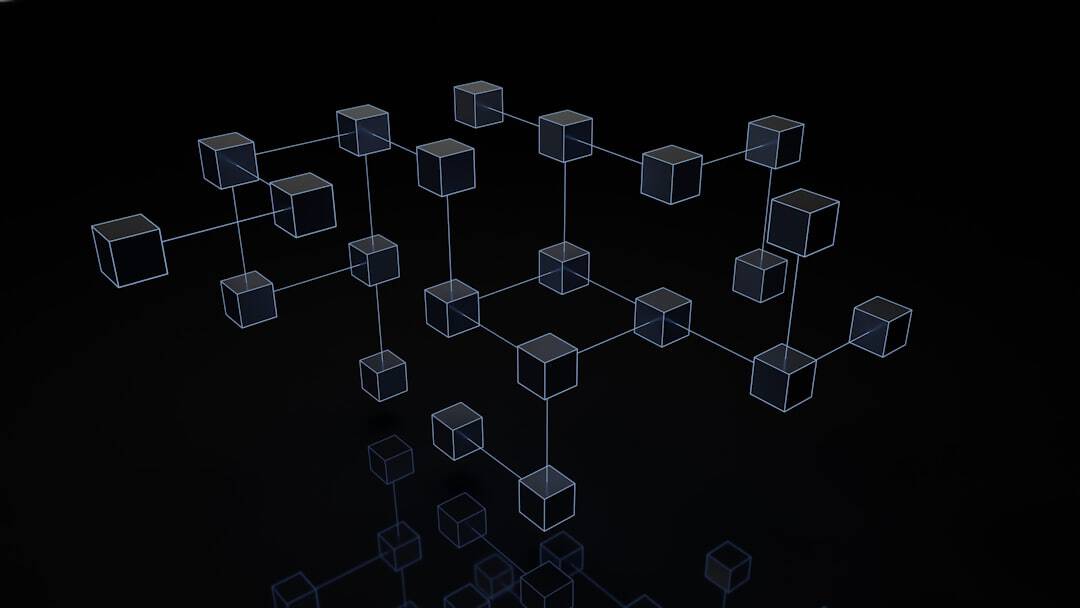An essential idea in machine learning and artificial intelligence is neural networks. Designed to find patterns in data, they are algorithmic structures modeled after the neural architecture of the human brain. These networks transform a variety of input data formats, such as text, audio, images, and time series, into numerical vectors in order to process and classify the data. Multiple layers of interconnected nodes, or artificial neurons, make up a neural network’s structure.
Key Takeaways
- Neural networks are a type of machine learning model inspired by the human brain, consisting of interconnected nodes that process and transmit information.
- The quality and quantity of training data is crucial for the success of neural network models, as it directly impacts their ability to learn and make accurate predictions.
- Optimizing the architecture of a neural network involves fine-tuning the number of layers, nodes, and connections to achieve the best performance for a specific task.
- Transfer learning allows neural networks to leverage knowledge gained from one task to improve performance on another, saving time and resources.
- Activation functions play a key role in neural network models by introducing non-linearity and enabling complex mappings between inputs and outputs.
Weighted connections connect these neurons and are modified as learning progresses. These connection weights are adjusted by the network as it receives data, which helps it learn and become more efficient over time. We call this procedure “neural network training.”.
In recent times, neural networks have become increasingly popular because of their ability to solve complex problems in a variety of fields. They have shown especially good results in tasks like speech and picture recognition, natural language processing, and control of autonomous vehicles. A solid understanding of neural network principles, training methodologies, and optimization techniques is crucial for professionals operating in the fields of artificial intelligence and machine learning.
The Function of Neural Network Training Data. Important elements for a neural network’s performance are the caliber & volume of training data. Using training data, a network can be trained to accomplish a particular task, like language translation or object recognition in photos. The more representative and varied the training set of data, the more adept the neural network will be at generalizing & producing precise predictions on new, unobserved data. Preventing Overfitting and Ensuring Data Quality.
| Metrics | Value |
|---|---|
| Accuracy | 95% |
| Precision | 90% |
| Recall | 85% |
| F1 Score | 92% |
Since biases or inaccuracies in the training data can have a detrimental effect on the neural network’s performance, it is crucial to make sure that the data is accurate and clean. Also, overfitting—a common issue in machine learning—can be avoided by having a sizable and varied training dataset. In overfitting, the model performs well on the training data but poorly on fresh, untested data. Training data is updated and evaluated continuously.
A neural network’s performance can only be enhanced by regularly assessing and updating the training data to make sure it stays pertinent and representative of the issue domain. This could entail gathering fresh data, labeling already-existing data differently, or eliminating biased or unnecessary data. Through the allocation of time & resources towards the curation of superior training data, entities can enhance the precision & dependability of their neural network models. The arrangement and structure of a neural network’s layers & neurons are referred to as its architecture. A neural network’s architecture needs to be optimized in order to operate at peak effectiveness and speed.
When creating a neural network’s architecture, there are a few important things to take into account: the total number of layers, the quantity of neurons in each layer, and the connectivity between the layers. Through trial and error & iterative refinement, neural network architecture can be optimized. This entails experimenting with various architectures and hyperparameters, like activation functions and learning rates, and assessing how well they perform using a validation dataset.
Researchers can determine which configuration works best for a given task by methodically testing and comparing various architectures. Automated techniques like neural architecture search (NAS) are another way to optimize neural network architecture. In NAS, the optimal neural network architecture for a given task is automatically found using algorithms. With the aid of these techniques, researchers may be able to find novel architectures that perform better than customary hand-designed architectures. Overall, a combination of computational resources, domain expertise, & experimentation are needed to optimize the architecture of a neural network.
Researchers can enhance a neural network’s performance & efficiency for a variety of applications by carefully creating & optimizing its architecture. Transfer learning is a machine learning technique in which a model that has been trained on one task is applied to another task that is similar. When dealing with sparse training data or computational resources, this method is especially helpful. Transfer learning enables researchers to apply pre-trained models to new tasks with little additional training by utilizing knowledge from one task.
Transfer learning in neural networks can be utilized in a variety of ways. As feature extractors, one popular method is to employ pre-trained models. This method retrains only the final layers of the pre-trained model on the new task, leaving the weights of the pre-trained model unchanged. This enables researchers to modify the model for a new task while still taking advantage of the learned representations in the pre-trained model. Retraining some or all of the layers in a pre-trained model on a new task using fresh data is known as fine-tuning, & it is another method of transfer learning. More computational power and training data are needed for fine-tuning, which gives the pre-trained model greater adaptability to a new task.
All things considered, transfer learning is an effective method for raising neural network performance, particularly in situations where obtaining training data is costly or scarce. Researchers can improve model performance on novel tasks & speed up model development by utilizing knowledge from pre-trained models. In order to add non-linearity to a neural network model, activation functions are an essential component. They help decide whether or not a neuron should be activated based on an input threshold by being applied to each neuron’s output in a neural network. Neural networks use a number of widely used activation functions, such as tanh, sigmoid, softmax, and ReLU (Rectified Linear Unit).
Every activation function has unique qualities and can be used for various kinds of tasks. For image recognition and natural language processing, for instance, hidden layers of neural networks frequently employ the sigmoid and tanh activation functions. By adding non-linearity to the model, these functions aid in the identification of intricate patterns in the data.
ReLU activation function, on the other hand, has become more well-known recently because of how easy it is to use & how well it trains deep neural networks. ReLU helps alleviate the vanishing gradient issue and speeds up convergence during training by setting all negative values to zero. For multi-class classification tasks, a neural network’s output layer frequently uses the Softmax activation function. For tasks like image classification and language translation, it is appropriate because it normalizes the output values into a probability distribution over several classes. All things considered, developing successful neural network models requires investigating various activation functions and comprehending their characteristics. Researchers are able to enhance a neural network’s performance and speed of convergence for a variety of tasks by carefully choosing the activation functions for each layer.
Strategies for Resolving Overfitting. In neural networks, overfitting can be overcome in a few different ways. To discourage big weights in the model, one strategy is to employ regularization techniques like L1 or L2 regularization, which include a penalty term in the loss function.
By making the model less complex and encouraging simpler representations, regularization aids in the prevention of overfitting. Dropping out and quitting early. Dropout is a technique that involves temporarily removing random neurons from the network during training in order to combat overfitting.
Dropout forces the model to learn redundant representations, which promotes robustness & helps prevent co-adaptation of neurons. Also, early stopping is a straightforward yet powerful method for keeping neural networks from overfitting. This entails tracking the model’s performance during training on a validation dataset & pausing when performance starts to deteriorate.
Enhancing Capability to Generalize. By using these methods, researchers can enhance their models’ capacity for generalization & improve their performance on fresh, untested data. In general, a mix of regularization strategies, dropout, and early stopping is needed to overcome overfitting in neural networks. Building extremely complex models that can learn from vast amounts of data has been made possible by deep learning, which has revolutionized many fields including computer vision, natural language processing, & speech recognition. Deep neural network architectures with numerous layers of connected neurons are what define deep learning models.
Deep learning’s capacity to automatically derive hierarchical representations from unprocessed data is one of its main advantages. In high-dimensional data, like text, audio, and images, this enables deep learning models to identify intricate patterns and relationships without the need for manual feature engineering. The flexibility and scalability of deep learning is another benefit. With the aid of parallel computing resources like GPUs and TPUs, deep learning models can be trained on massive datasets, allowing researchers to address progressively more complicated issues in fields like autonomous systems, healthcare, & finance. In spite of all of its benefits, deep learning has drawbacks, including high processing costs, a lot of training data, and problems with interpretability.
Scholars persistently investigate strategies for tackling these obstacles by employing approaches like interpretability methods, regularization, and transfer learning. In general, realizing the full potential of deep learning necessitates a thorough comprehension of its methods and guiding principles in addition to giving careful thought to its drawbacks. Through efficient utilization of deep learning, scientists can create robust models that surpass the limits of artificial intelligence and machine learning.
If you’re interested in the social dynamics of the metaverse and how it relates to neural networks, you may want to check out this article on community and culture in the metaverse: social dynamics in the metaverse. It explores how diversity and inclusion play a role in shaping the virtual world and how regulatory landscape impacts the development of the metaverse. Understanding these social dynamics can provide valuable insights into how neural networks can be utilized to enhance the user experience and create a more inclusive virtual environment.
FAQs
What is an artificial neural network (ANN)?
An artificial neural network (ANN) is a computational model inspired by the structure and function of the human brain. It is composed of interconnected nodes, or “neurons,” that work together to process and analyze complex data.
How does an artificial neural network work?
An artificial neural network works by receiving input data, processing it through multiple layers of interconnected neurons, and producing an output. The network learns from the data it processes and adjusts its connections (weights) to improve its performance over time.
What are the applications of artificial neural networks?
Artificial neural networks have a wide range of applications, including image and speech recognition, natural language processing, financial forecasting, medical diagnosis, and autonomous vehicles. They are also used in various fields such as finance, marketing, and manufacturing for data analysis and pattern recognition.
What are the different types of artificial neural networks?
There are several types of artificial neural networks, including feedforward neural networks, recurrent neural networks, convolutional neural networks, and deep learning networks. Each type is designed for specific tasks and has its own architecture and learning algorithms.
What are the advantages of using artificial neural networks?
Artificial neural networks can learn and adapt to complex patterns in data, making them suitable for tasks that involve non-linear relationships and large amounts of data. They can also handle noisy or incomplete data and can generalize from the training data to make predictions on new, unseen data.
What are the limitations of artificial neural networks?
Artificial neural networks require a large amount of data for training and can be computationally intensive, especially for deep learning networks. They can also be difficult to interpret and may require careful tuning of parameters to achieve optimal performance. Additionally, overfitting and training time are common challenges in using artificial neural networks.











Leave a Reply